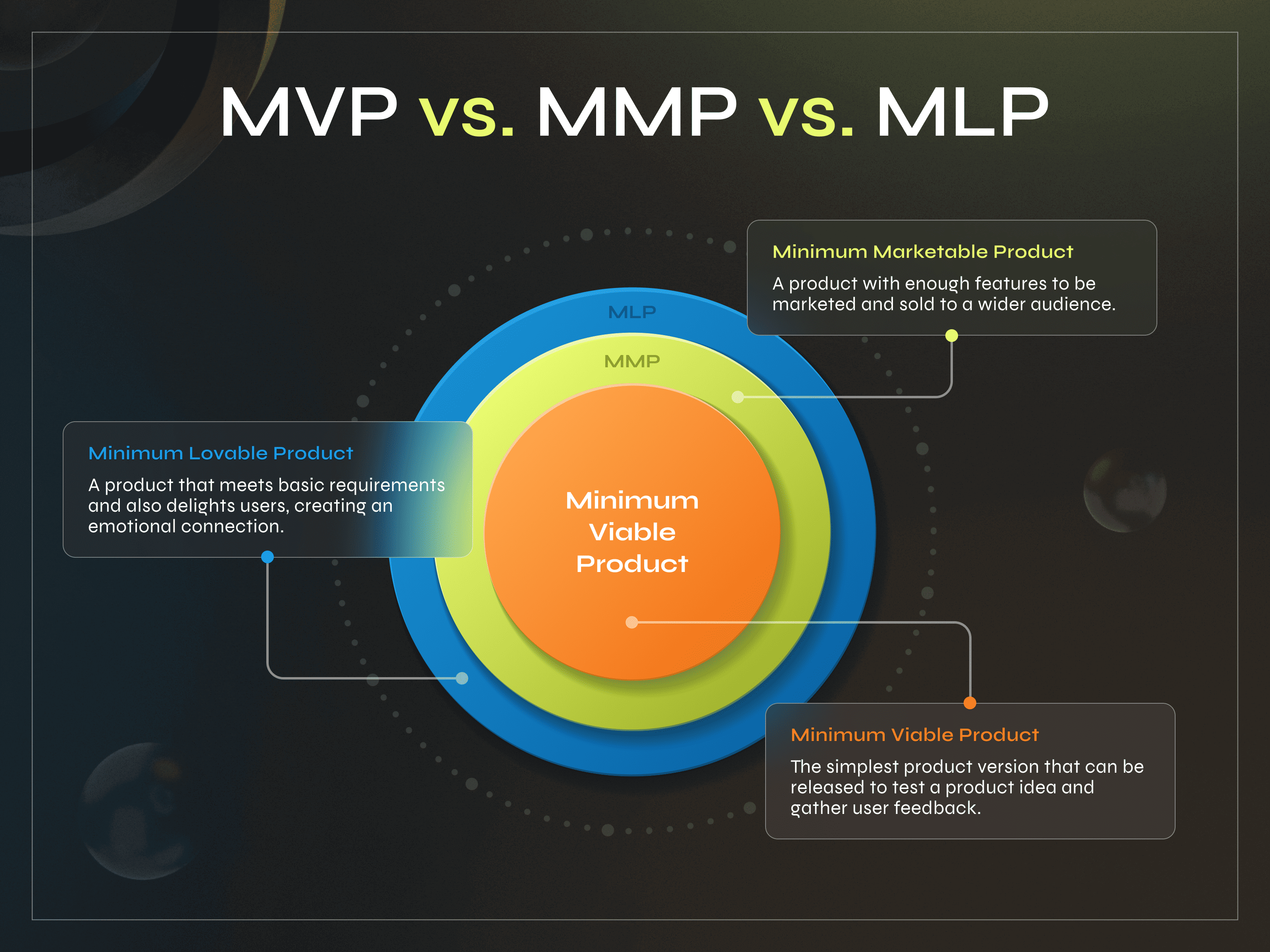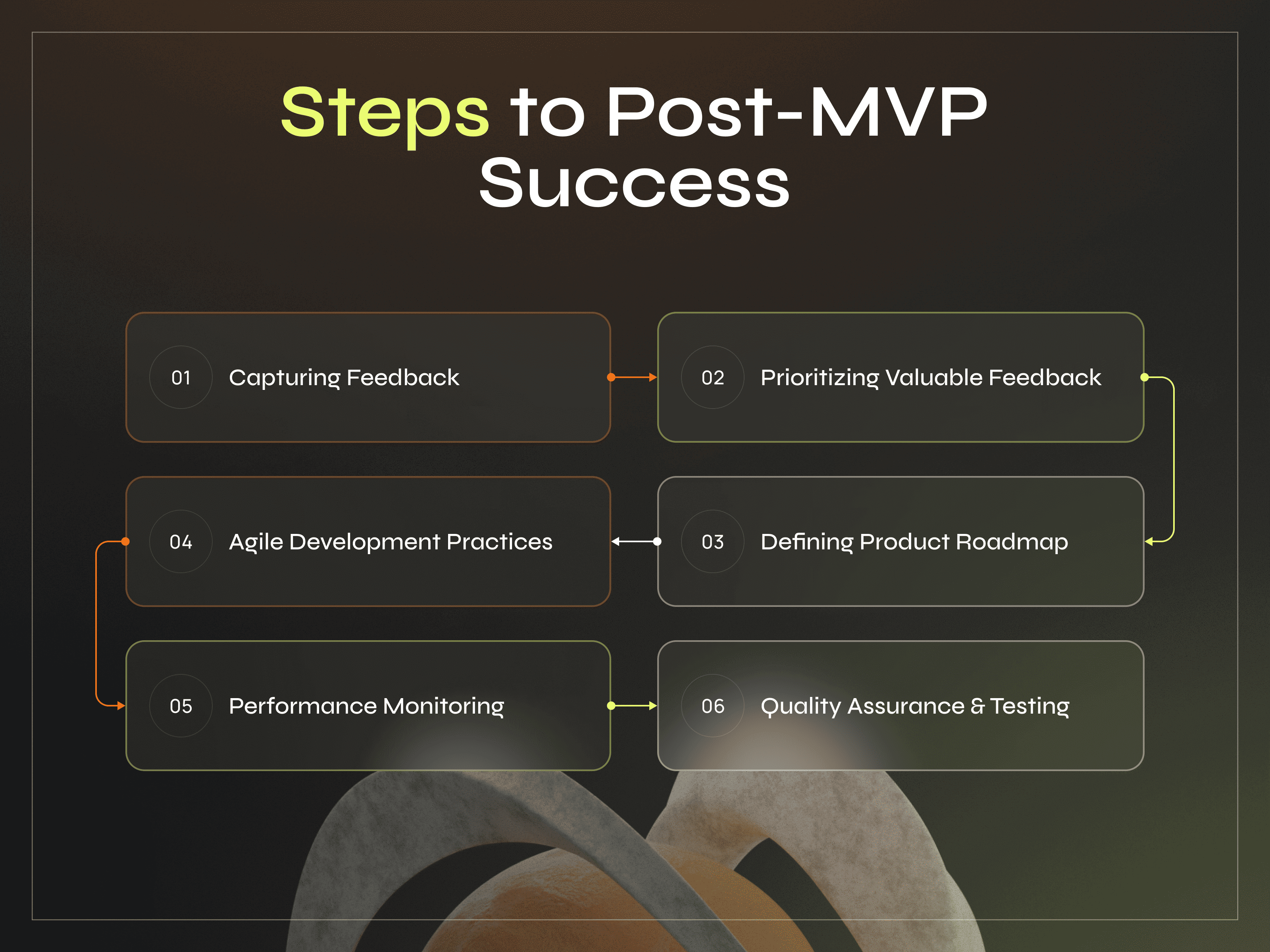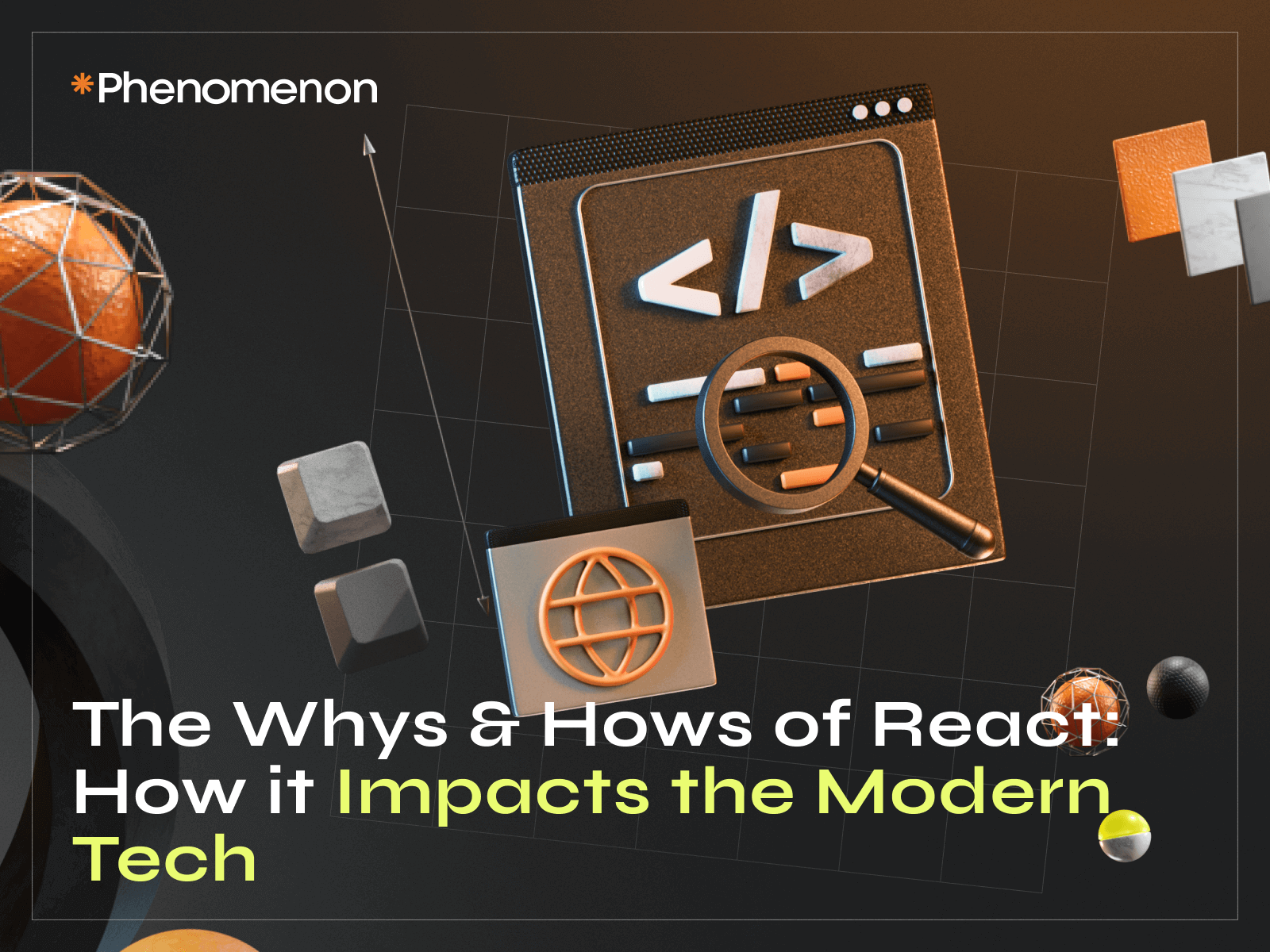Once you’ve built a minimal viable product (MVP), you’re on the right track to success. Although you don’t have a sophisticated product with loads of lovable functionality, you still have enough features to solve your users’ problems. But what’s next? What vital steps do you have to take to ensure your product is scalable, attracts investors, and, what’s probably most important, appeals to a broader audience?
This article will answer these questions. Although all startups are different, and your approach will depend on the industry, product type, and budget, this guide will provide you with some general information to help you achieve market success.
Key numbers:
- Nearly 90% of all startups fail because they cannot effectively meet market demands or adapt to changing market conditions; 20% fail in the first year.
- Data shows that the software-as-a-service (SaaS) sector will expand from $130 billion in 2021 to $716 billion by 2028.
- Only 50% of employee-run enterprises survive beyond the first five years.
- Lack of funding is the number one reason startups fail.
Understanding the post-launch stage
After a startup launches its minimum viable product, it enters a critical phase, often called the post-MVP stage. This stage is essential for scaling operations, enhancing the product based on user feedback, and transitioning from a minimal model to a more robust offering. Here’s what you need to know about navigating this pivotal time in a startup’s life cycle.

What сomes after MVP?
- Feedback Collection and Analysis. Immediately following the MVP launch, gathering and analyzing customer feedback is vital. This feedback is crucial for identifying what’s working, what isn’t, and the most pressing user needs. Engaging with your users directly can help refine your product to meet their expectations better and solve their problems more effectively.
- Iterative Development. Post-MVP does not mean that development stops. On the contrary, this is the time to iterate on your product based on the feedback received. This iterative process helps evolve the MVP into a fully-fledged product that can appeal to a broader audience and serve more complex needs.
- Scaling Operations. Once the initial feedback is incorporated and the product is stabilized, the focus shifts to scaling operations. This can involve expanding the team, increasing marketing efforts, and possibly scaling up infrastructure to handle increased user load and data processing requirements.
- Enhancing User Experience. As more users interact with your product, enhancing the user experience becomes crucial. This could mean redesigning interfaces, improving customer support, and ensuring the product is intuitive and user-friendly.
- Building a Roadmap for Future Features. Planning for future development is also important during the post-MVP stage. This involves setting a roadmap for new features and improvements that align with long-term business goals and user demands. This roadmap should be flexible enough to adapt to changes in the market or technology.
- Monitoring Metrics and Setting KPIs. To ensure the post-MVP stage leads to growth, startups must monitor key performance indicators (KPIs) such as user engagement, retention rates, and revenue growth. These metrics will guide further development and help measure the success of the product’s iterations.
- Securing Further Funding. Post-MVP is often where startups seek additional funding. Demonstrating a successful MVP and a strong plan for future growth can help attract investors. This funding is crucial for accelerating development, marketing efforts, and expanding the team.
MVP vs. MMP vs. MLP
The MVP for a project management web app might offer the essential features to organize tasks and track their completion. This basic functionality allows the development team to gather user feedback on the app’s core premise and usability. For instance, the MVP might only include features for creating projects, adding tasks, and assigning them to team members without any integrations or complex reporting tools.
The Minimum Marketable Product (MMP) builds on the MVP by incorporating additional features necessary to attract and satisfy a broader market segment. For the project management app, this could involve adding more sophisticated project tracking capabilities, such as Gantt charts, resource allocation tools, and basic analytics. These features make the product marketable to a wider audience, including larger teams and organizations that need more comprehensive project management solutions.
Transitioning to the Minimum Lovable Product (MLP) involves adding elements that enhance user satisfaction and promote user retention. For the project management web app, this could include a highly intuitive user interface, customization options for the dashboard, integration with other commonly used tools like Slack or Google Drive, and perhaps even AI-driven insights for project optimization. These enhancements make the app functional, marketable, delightful, and engaging, encouraging users to choose this app over competitors for its enjoyable user experience.
Each stage of the product focuses on adding value based on user feedback and market demand to increase user engagement and expand market reach.
Questions to Ask Yourself in the Post-Launch Stage
Navigating the post-launch phase effectively requires continuous reflection and strategic thinking. Here are some crucial questions that founders and teams should consider to guide their decision-making and ensure the startup remains on a path to growth and success:
1. What is the User Feedback Telling Us?
- Are there common themes in the feedback that point to a particular strength or weakness?
- How quickly can we implement changes based on this feedback?
2. Are Our Initial Assumptions Still Valid?
- Does the data support the assumptions we made during the MVP stage?
- What assumptions have proven incorrect, and how does this change our strategy?
3. What Are the Key Metrics Showing?
- Which metrics have shown the most significant improvement or decline post-launch?
- Are these metrics aligned with our long-term goals?
4. How Well Are We Executing Our Roadmap?
- Are we on schedule with the development and release of new features?
- Do we need to reprioritize any features based on user feedback or shifts in the market?
5. What Resources Do We Need to Succeed?
- Do we have the right team in place to achieve our current objectives?
- What additional skills or resources are necessary to move to the next level?
6. How Is Our Financial Health?
- Are we meeting our financial projections?
- What changes might be needed in our funding strategy to ensure sustainability and growth?
7. What Is the Competitive Landscape?
- Have there been any significant changes in the competitive environment since our MVP launch?
- How should we adjust our strategy to maintain or enhance our competitive edge?
8. How Do We Maintain Team Alignment and Morale?
- Is the team clear on the vision and the roadmap?
- How can we keep the team motivated and focused during this intensive growth phase?
9. What Legal or Regulatory Considerations Are There?
- Are there emerging legal or regulatory issues that could impact our product or business model?
- How can we prepare for these potential challenges?
10. How Are We Managing Risk?
- What are the biggest risks facing our startup right now?
- How are we mitigating these risks?
Addressing these questions regularly and honestly can help a startup navigate the complexities of the post-MVP stage more effectively. It’s crucial to stay adaptive, responsive, and proactive in using insights from these questions to refine strategies and operations. This continual learning and adaptation process is key to evolving from a startup with a viable product into a mature, successful company.

Practical steps to take after releasing an MVP
After launching an MVP, startups enter a critical phase where strategic actions can significantly impact the product’s trajectory. Here’s how you can effectively navigate this post-MVP stage, illustrated with industry-specific examples:
Promoting the MVP
Promotion ensures the target audience tests and interacts with the MVP. Consider launching on enterprise marketplaces if applicable; for example, a software tool enhancing productivity might succeed on platforms like Microsoft Azure or Google Workspace Marketplace, akin to how Coupler.io gained traction. For tech-oriented products, platforms like Appsumo or Product Hunt offer access to an early adopter audience eager to try new technologies and provide constructive feedback. Additionally, engaging with potential users on forums like Reddit or industry-specific channels can be effective. For instance, a new data analytics tool might be introduced in relevant subreddits where professionals discuss data challenges, offering direct insights and building user interest.
Gathering and Utilizing Feedback
Once your MVP is in the wild, collecting and acting on user feedback becomes vital. Simple tools like Typeform or direct social media interactions can effectively gather user impressions and specific issues. For instance, when Mailtrap tested its email sandboxing service, it relied on direct feedback from developers on X and niche tech forums to better understand its users’ needs. This feedback is crucial for iterating on the product, focusing on features that address real user problems.
Deepening User Understanding Through Interviews
Customer development interviews are invaluable for gaining deeper insights into what users truly need and expect from your product. These discussions can reveal the product’s usability and the emotional and business impacts it has on users. For example, a startup offering an AI-driven marketing tool might discover through these interviews that while their tool forecasts trends well, users struggle with integrating these insights into existing digital marketing platforms. This could lead to a pivot or an enhancement, significantly increasing the product’s value.
Refining and Expanding the Product
Running product discovery sessions helps refine and expand the product vision. Employ frameworks like BRIDGeS, which are used by companies like Railsware, to facilitate these sessions effectively. These sessions involve visual tools and collaborative brainstorming to explore new features and improvements. For example, a health tech startup might use these sessions to pinpoint features that could make their patient monitoring tools more intuitive for medical staff, thereby addressing critical usability issues that were not initially apparent.
Prioritizing Development and Building a Roadmap
Finally, the insights gathered from feedback and discovery sessions should inform the prioritization of new features and the development of a detailed product roadmap. Using prioritization methods like MoSCoW ensures that essential features that deliver the most value are developed first. For instance, a fintech startup might identify through user feedback that integrating with more banks is a “must” feature, while a ‘”could” feature might be adding support for cryptocurrency transactions, which is less critical but could attract a new user segment.
How to measure the success
After launching a Minimum Viable Product (MVP), accurately assessing its impact is crucial for guiding further development and securing investor interest. Here’s how you can effectively measure the success of your MVP, illustrated with practical examples:
Define and Monitor Key Metrics
Start by defining clear, measurable key performance indicators (KPIs) that align with your business objectives. For instance, a fintech startup might track new user sign-ups and daily transactions to gauge market acceptance. To assess engagement, an ed-tech platform could monitor user session lengths and login frequencies. A SaaS company should focus on financial metrics like monthly recurring revenue (MRR) and average revenue per user (ARPU), which reflect the financial health and growth trajectory. Regularly collecting customer satisfaction data through tools like net promoter score (NPS) surveys can provide insights into customer loyalty and product satisfaction, which are essential for long-term success.
Establish Continuous Feedback Loops
Feedback is the lifeline of post-MVP development. For example, a health tech startup might use in-app surveys or feedback after telehealth sessions to gather insights directly from users. This continual stream of feedback allows companies to make iterative improvements. For instance, if a mobile game developer learns from user feedback that a level is too difficult, they can quickly modify the difficulty settings, improving user satisfaction and retention.
Use Analytics to Guide Development
Leveraging data analytics tools can uncover deep insights into user behavior and product performance. A video streaming service, for example, might analyze viewership data to determine popular genres, guiding content acquisition strategies. Analyzing this data helps pinpoint what features to develop next, what to improve, and potentially what to discard.
Competitive Benchmarking and Financial Health
Understanding your market position involves regular competitive benchmarking. To assess marketing efficiency, an e-commerce startup could compare customer acquisition costs with competitors. Similarly, monitoring financial health through metrics like burn rate and the ratio of customer acquisition cost (CAC) to lifetime value (LTV) ensures the startup remains viable. For instance, a subscription-based fitness app reviewing these metrics might need to adjust its marketing strategies to improve the sustainability of its business model.
Strategic Adjustments Based on Insights
The ultimate aim of measuring your MVP’s success is to make informed strategic decisions. For example, if a software company observes a high churn rate after a free trial, implementing a targeted follow-up email campaign offering discounted subscription plans could help convert more trial users into paying customers.
Summary
In navigating the treacherous waters of product development, moving from an MVP to an MMP and finally to an MLP can often feel like charting unknown territories. Remember the wise words of Reid Hoffman, co-founder of LinkedIn: “If you are not embarrassed by the first version of your product, you’ve launched too late.” Embrace each stage of development as a stepping stone toward creating a product that meets market needs and wins hearts.
If you’re ready to dive deeper into the world of MVPs and beyond, or if you need guidance on propelling your product through these critical stages, contact Phenomenon today. We’re here to help you turn your bare-bones vision into a beloved market staple. Let’s make your product not just functional but phenomenal.

















